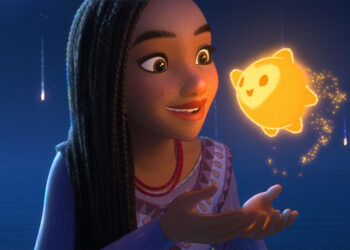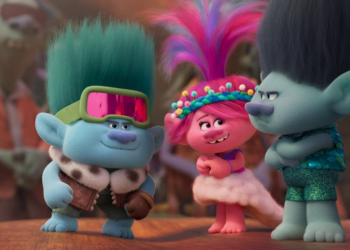
*This is a user-submitted post by Amy Atherton*
Growing up, animal animations were my happy place. Lady and the Tramp, 101 Dalmatians, and The Lion King dominated my movie-watching rotation. I was most enraptured, however, by the British/French-produced adaptation of Colin Dann’s classic, The Animals of Farthing Wood and its sequels. Produced by Telemagination and La Fabrique, the series was a rarity among those aimed at young children in its mature storytelling. Combined with its cast of compelling characters, this made The Animals of Farthing Wood simultaneously an engrossing drama and a joyful celebration of the natural world. Airing between January 1993 and December 1995, the series was broadcasted throughout the world in the years since its output and is available on DVD.
The initial season follows Dann’s original story, seeing a large group of woodland animals take a perilous journey to a safe reserve as their Farthing Wood home is destroyed by human development. The animals, including a fox, a badger, rabbits, pheasants, an owl, a toad, a weasel, mice, and an adder—to name a few—take an ‘oath of mutual protection’ to ensure that the prey animals can safely make the journey alongside their natural predators. The following two seasons chronicle the trials faced by the animals upon their arrival at White Deer Park, including a vicious rivalry with a neighboring pack of foxes, fighting starvation in a cruel winter, and a plague of rats taking over the reserve. Real dangers faced by wild animals are portrayed with honesty, including the human role in destroying the natural world.

From the offset, there is a significant difference to Dann’s novel in that many of the almost entirely male cast has been made female. Male animals in the novel (Adder, Weasel, Owl and Kestrel), characters that play a great role in the series, are realized here as female, giving the party of animals a much more balanced gender ratio. The decision, I feel, was ultimately the right one. These characters are not treated as ‘the girl’ in a cast of males but as well-developed and distinct individuals, each playing a role in the greater story. It is in the characters that the series shines.
From the very beginning, there is a huge cast to contend with, and it would have been very easy for many characters to fall by the wayside. Here, almost everyone in the enormous ensemble is well-defined and engaging. The care given to bringing to life the entire group of animals is plain to see and makes the series’ unflinching portrayal of the realities of life all the more heart-rending. Characters die throughout the three seasons: main characters, comic characters, and child characters. Death is something that is never shied away from, and as a result, the peril feels real. Amid the light-hearted moments, there is a real sense that any character could lose their life at any time, and the deaths could be extremely upsetting.

As one might expect of a series of the early nineties, the animation can feel stilted at times, with the look rather more reminiscent of Watership Down than most American productions. Visually, the environments are looked out upon from the perspective of the animals, and the background art has a gentle, painted look that lovingly portrays the European countryside. Very rarely are humans seen apart from legs or hands on the animals’ level, which helps give the impression of their being small and vulnerable in a world they have no control over. All this is set against a beautiful score by Dennis Cooper and Detlev Kühne that works to heighten the many emotional highs and lows of the series. It all comes together for something that is epic on a level I have rarely seen in children’s animated series.
If you haven’t already, track this series down and give it a go. After the first two seasons, there is an unfortunate drop in quality with a greater focus on comic characters and the introduction of antagonists that are more obnoxious than threatening. Season one and two, however, are pure masterpieces, and they stand up to this day. There is something I find so refreshing about how the story is told without ever talking down to a young audience. The Animals of Farthing Wood is exquisitely beautiful, dark, humorous, a brilliant, loving tribute to the natural world, and a must watch.
Have you seen The Animals of Farthing Wood? Sound off below!
Edited by: Kelly Conley





